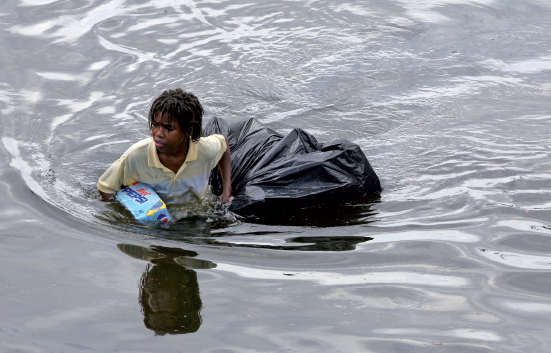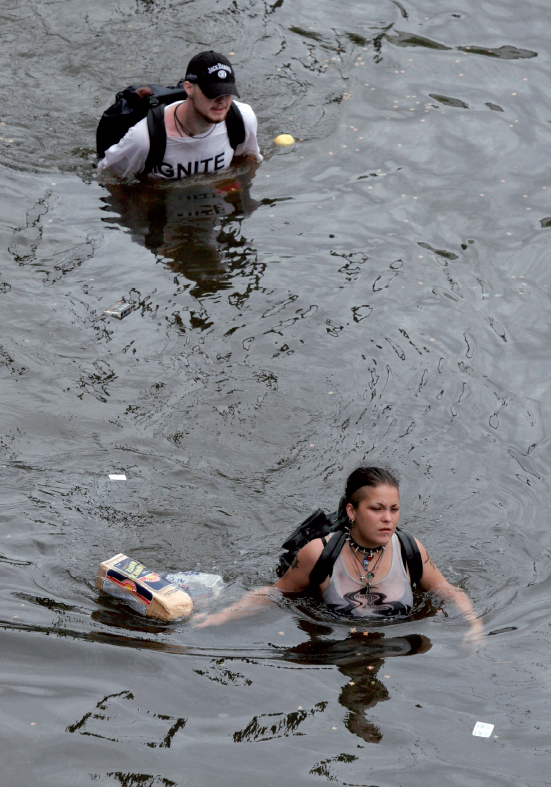Exploring American Histories: Printed Page 940
Exploring American Histories, Value Edition: Printed Page 771
Bush’s Second Term
Bush won reelection, but over the next four years his credibility suffered. Several issues—the continued presence of sectarian violence in Iraq, the lack of progress in training Iraqi troops and police to safeguard civilians, the mounting death tolls, and the failure of the U.S.-supported Iraqi government to work out a political solution to the country’s problems—turned the majority of Americans against the war. Even when in 2007 the president ordered an increase of 30,000 troops, known as “the surge,” which succeeded in reducing mayhem in Baghdad and its vicinity, many Americans had had enough. In 2008 polls showed that 54 percent of Americans considered the invasion of Iraq a mistake, and 49 percent wanted U.S. troops to return home (compared with 47 percent who opposed withdrawal).
However, the president seemed impervious to criticism. The Bush administration continued to enforce the Patriot Act with little concern for the protection of privacy and civil liberties, and it justified its actions on the belief that in a time of war the president had few limits on his power. Bush also refused to back down from the policy of incarcerating suspected al-Qaeda rebels in the U.S. military base in Guantánamo, Cuba. The facility housed more than six hundred men classified as “enemy combatants,” who were subject to extreme interrogation and were deprived of legal counsel. This policy changed somewhat when the Supreme Court, in Hamdan v. Rumsfeld (2006), ruled that the military tribunals established by the president to prosecute Guantánamo prisoners were unconstitutional. Shortly after, Congress passed legislation providing a small measure of protection for the four hundred prisoners who remained in Guantánamo.
As Bush’s handling of the Iraq War generated rising disapproval, his management of a major natural disaster further diminished his popularity. On August 29, 2005, Hurricane Katrina slammed into the Gulf coast states of Louisiana and Mississippi. This powerful storm devastated New Orleans, a city with a population of nearly 500,000, a majority of whom were African American. A thirty-foot flood surge caused poorly maintained levees to break, placing large areas of the city underwater. Despite the evacuation of hundreds of thousands of people from New Orleans before the hurricane struck, approximately 50,000 residents remained trapped by the flood. Not only did local and state officials respond slowly and ineptly, but so, too, did the federal government in providing assistance to those trapped in the city.
In the days after the storm hit, chaos reigned in New Orleans. Evacuees were housed in the Superdome football stadium and a municipal auditorium without adequate food, water, and sanitary conditions, and the scenes of despair were broadcast on national television. The flooding killed at least 1,800 residents of the Gulf coast, New Orleans’s population dropped by around 130,000 residents, and critics blamed the president for his lack of leadership and slow response to the disaster. Some argued that just as Bush had failed to manage the war in Iraq, he also lacked the ability to handle the Katrina catastrophe. Overall, Hurricane Katrina was just as much a human-made disaster as a natural one.


Displeased with the Bush administration, voters elected a Democratic majority to the House and Senate in 2006, yet little changed. American troops remained in Iraq and Afghanistan. Mobilization for the war on terror had become a permanent part of life in the United States, much like the growth of the national security state during the Cold War (see chapter 24). However, not all Americans experienced the war equally. With military enlistments at low levels, the men and women who served in Iraq and Afghanistan were disproportionately poor and from minority communities. At the same time, Osama bin Laden remained alive and in hiding, and al-Qaeda had regrouped in Pakistan and Yemen. The Bush administration did little to address the perennial problem of Israeli-Palestinian relations, one of the chief elements that fueled terrorism and Islamic radicalism. Making the situation even more combustible, in 2006 Hamas (the Islamic Resistance Movement), which the United States considered an anti-Semitic, terrorist organization, won Palestinian parliamentary elections and posed a new threat to peace in the Middle East.
With turmoil continuing in the Middle East and the Persian Gulf, the threat of nuclear proliferation grew. Iraq did not have nuclear weapons, but Iran sought to develop nuclear capabilities. Iranian leaders claimed that they wanted nuclear technology for peaceful purposes, but the Bush administration believed that Iran’s real purpose was to build nuclear devices to attack Israel and establish its supremacy in the region. The election in April 2006 of Mahmoud Ahmadinejad, an avowed enemy of Israel, as president of Iran reinforced Bush’s fears. Pakistan, a country that already had nuclear weapons, also proved troublesome. Although an ally of the United States, Pakistan was largely ineffective in removing al-Qaeda and Taliban forces from their bases along the country’s border with Afghanistan. Equally disturbing, a high-ranking nuclear scientist in Pakistan had previously sold information to North Korea, one of the states in Bush’s “axis of evil.” North Korea, a totalitarian nation and one of the few remaining Communist dictatorships left from the Cold War era, conducted underground nuclear tests in 2006.
Review & Relate
|
How did President Bush put compassionate conservatism into action? |
How did the war on terror prompt U.S. leaders to rethink America’s position in the world? |